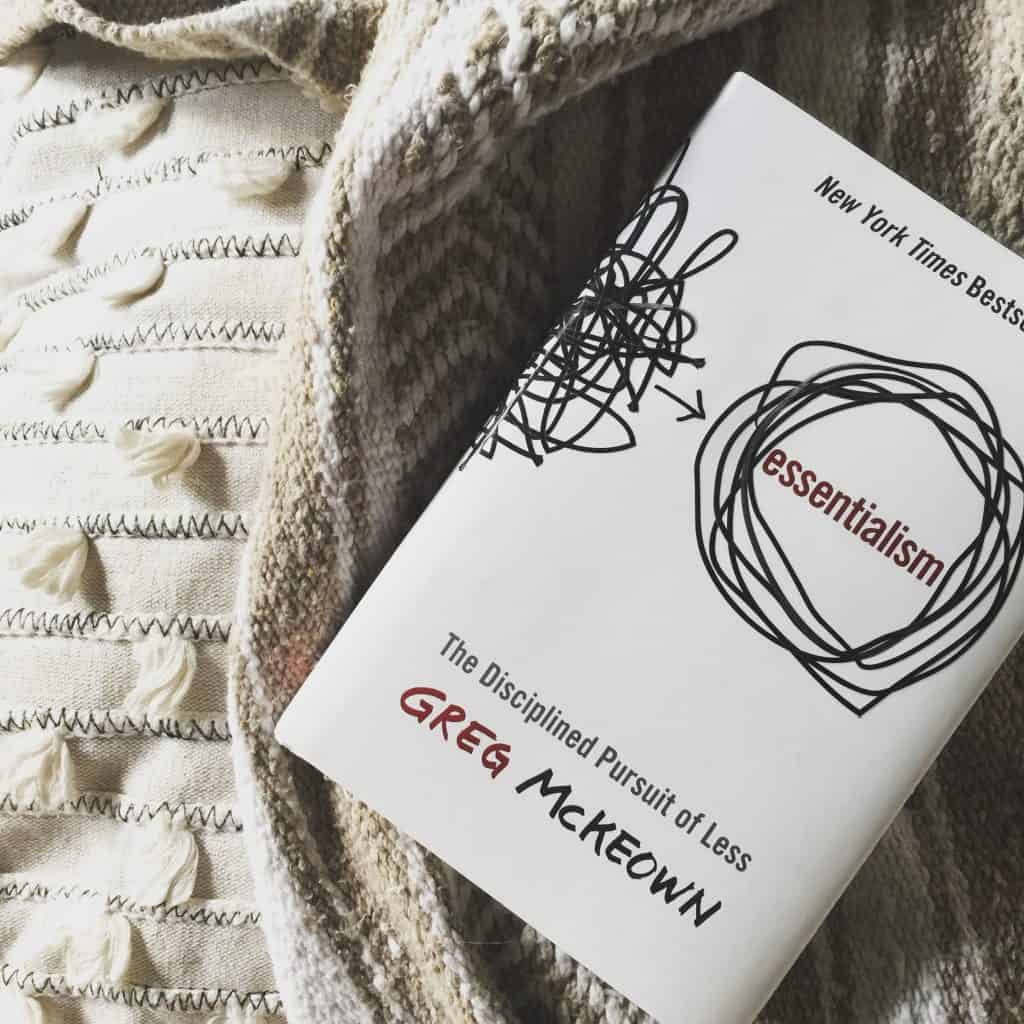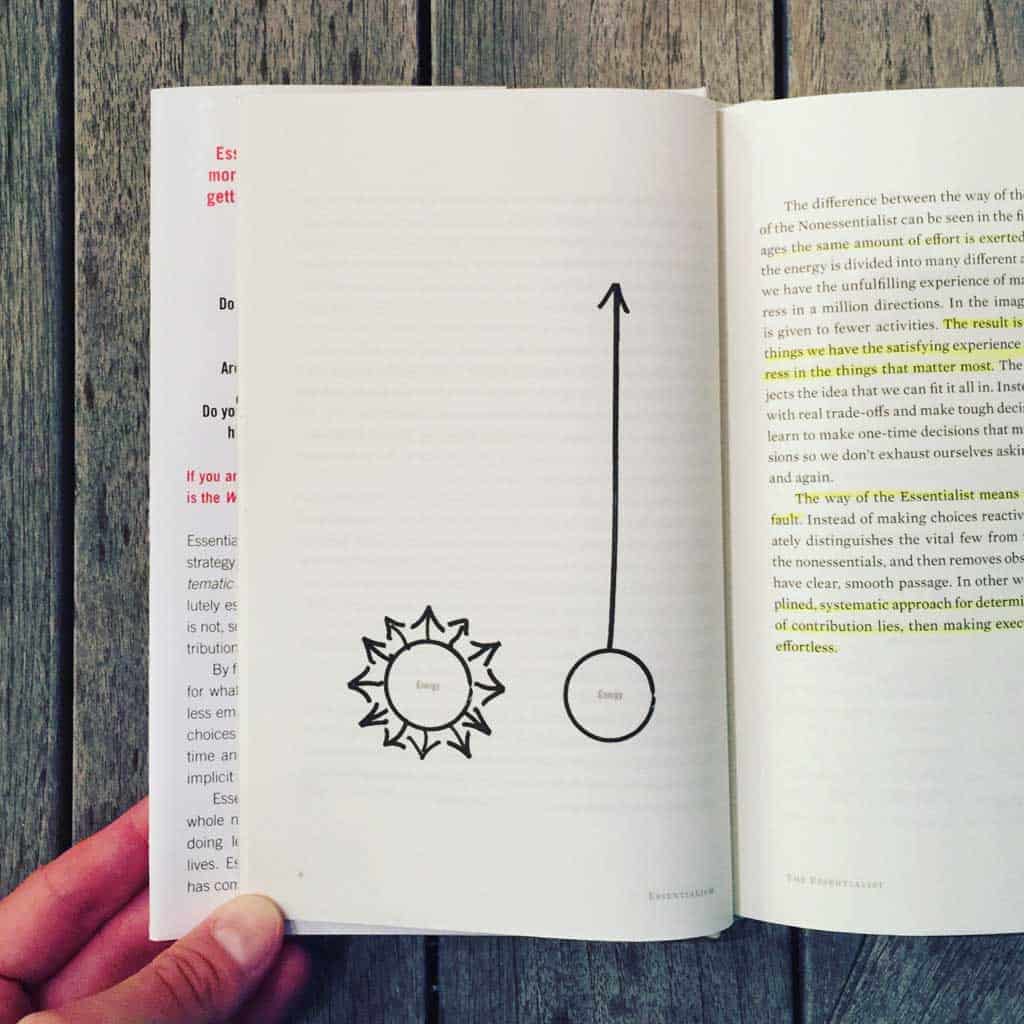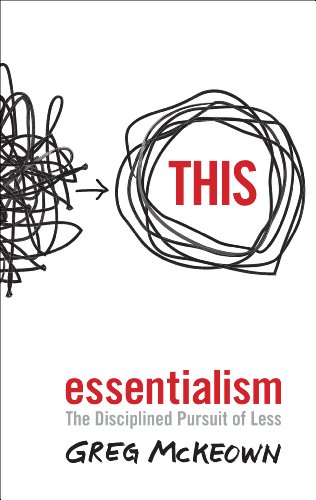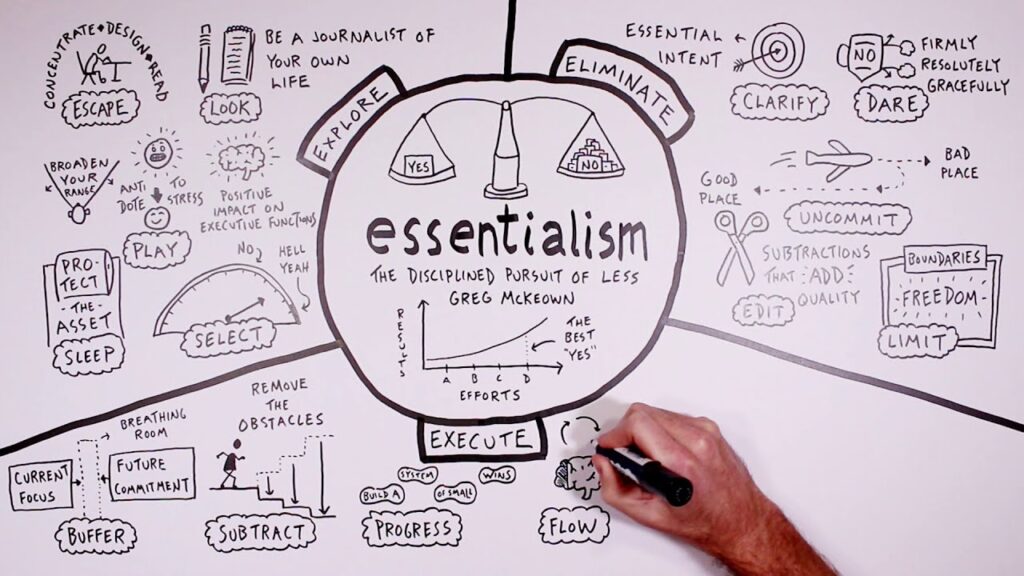In “The Essence of Essentialism: A Comprehensive Book Recap,” you will find a comprehensive summary of the book, “Essentialism.” This recap aims to provide you with a clear understanding of the book’s key lesson, accompanied by engaging stories and practical examples. Throughout the article, you will also encounter insightful quotes from the actual book, enriching your reading experience. Whether you are new to the concept of essentialism or seeking a refresher, this recap will equip you with valuable insights to apply in your own life.

The Essence of Essentialism
Understanding the concept of essentialism
Essentialism is a philosophy and mindset that focuses on identifying and prioritizing what truly matters in our lives. It encourages us to let go of non-essential things and activities, allowing us to create more space and time for the things that align with our values and goals. The concept of essentialism teaches us to be intentional with our choices and to focus our energy on what brings us the most value and fulfillment.
Introduction to the book Essentialism
“The Essence of Essentialism” is a comprehensive book that delves deeper into the principles and practices of essentialism. In this book, the author, Greg McKeown, explores the importance of adopting an essentialist mindset in our modern lives and provides practical strategies for implementing essentialism in our decision-making, time management, and goal setting.
The Importance of Essentialism
Recognizing the need for essentialism in modern life
In today’s fast-paced and overly connected world, it’s easy to get caught up in the constant demands and distractions that surround us. We often find ourselves overwhelmed and stretched thin, trying to juggle multiple responsibilities and commitments. This is where essentialism becomes crucial. By recognizing the need for essentialism, we can regain control over our lives and make conscious choices about how we allocate our time, energy, and resources.
Benefits of adopting an essentialist mindset
Adopting an essentialist mindset has numerous benefits that can positively impact both our productivity and well-being. When we prioritize what truly matters and eliminate non-essential distractions, we are able to focus our energy on the tasks and activities that align with our goals and values. This leads to increased efficiency, reduced stress, and a greater sense of fulfillment in our personal and professional lives.
The impact of non-essentialism on productivity and well-being
On the other hand, failing to embrace essentialism can have a detrimental impact on our productivity and overall well-being. When we fail to prioritize and say yes to every request, we become stretched thin and spread ourselves too thin. This can lead to burnout, decreased effectiveness, and a diminished sense of fulfillment. By understanding the impact of non-essentialism, we can avoid these pitfalls and create a more balanced and purposeful life.

Lesson 1: The Art of Saying No
Learning to say no without guilt or hesitation
One of the key lessons in essentialism is the art of saying no. Many of us struggle with saying no, fearing that we will disappoint others or miss out on opportunities. However, learning to say no is essential in order to protect our time and energy for what truly matters. By setting boundaries and being selective with our commitments, we can create space for the activities and relationships that are most important to us.
Setting boundaries and prioritizing your time and energy
Setting boundaries is a crucial aspect of adopting an essentialist mindset. It involves identifying our priorities and learning to say no to activities and requests that don’t align with them. By consciously allocating our time and energy to the things that truly matter, we can avoid spreading ourselves too thin and ensure that we are focusing on what brings us the most value and fulfillment.
The power of selective focus and its impact on effectiveness
Selective focus is another important aspect of essentialism. By focusing our attention on the vital few tasks and activities that align with our goals, we can increase our effectiveness and productivity. This involves letting go of non-essential distractions and commitments and dedicating our time and energy to the things that will have the greatest impact. By harnessing the power of selective focus, we can achieve more with less effort.
Lesson 2: The Principle of Essentialism
Identifying the vital few versus the trivial many
The principle of essentialism emphasizes the importance of distinguishing between the vital few and the trivial many. In other words, it urges us to differentiate between the activities and tasks that truly matter and those that are simply distractions or time-wasters. By identifying the vital few, we can allocate our resources more effectively and focus on what will bring us the greatest return on investment.
Understanding the 80/20 rule and its application in daily life
The concept of the 80/20 rule, also known as the Pareto Principle, is an essential tool in essentialism. It states that roughly 80% of the results come from 20% of the efforts. By understanding and applying this principle in our daily lives, we can prioritize the activities and tasks that will yield the greatest impact. This allows us to work smarter, not harder, and achieve more with less.
Practical tips for applying essentialism in decision-making
Making decisions can often be a challenging and time-consuming process. Essentialism provides practical tips for applying its principles in decision-making. This includes considering the trade-offs of each decision, focusing on what aligns with our values and goals, and being willing to let go of non-essential options. By applying these tips, we can make more intentional and purpose-driven decisions that align with our priorities.

Lesson 3: Letting Go of Non-Essentials
Recognizing and eliminating activities and commitments that don’t align with your priorities
Letting go of non-essentials is a crucial step in living an essentialist lifestyle. It involves recognizing the activities, commitments, and even relationships that no longer align with our priorities and values. By identifying these non-essentials, we can eliminate them from our lives and create space for what truly matters.
Overcoming the fear of missing out (FOMO)
The fear of missing out, also known as FOMO, can often hinder us from embracing essentialism. We worry that by saying no to certain opportunities or experiences, we may be missing out on something important or valuable. However, overcoming this fear is essential in order to live a more purposeful and intentional life. By focusing on our priorities and the things that truly matter to us, we can let go of FOMO and embrace the joy and fulfillment that essentialism brings.
Practical strategies for decluttering your physical and mental space
Decluttering is an important aspect of living an essentialist lifestyle. This involves not only decluttering our physical space by getting rid of unnecessary possessions, but also decluttering our mental space by letting go of negative thoughts, worries, and distractions. Practical strategies for decluttering include minimizing possessions, using digital detoxes, practicing mindfulness, and organizing our environment in a way that supports our essentialist mindset.
Lesson 4: Embracing Essentialist Mindset
Cultivating a mindset of purposeful action and intentional living
Embracing an essentialist mindset means cultivating a mindset of purposeful action and intentional living. It involves being intentional with our choices, focusing on what truly matters, and aligning our actions with our values and goals. By embracing this mindset, we can live a more fulfilling and purpose-driven life.
Understanding the role of essentialism in achieving long-term goals
Essentialism plays a crucial role in achieving long-term goals. By prioritizing our time and energy on the activities and tasks that align with our goals, we can make progress towards them more effectively. This requires discipline, focus, and a willingness to let go of non-essential distractions. By understanding the role of essentialism in goal achievement, we can set ourselves up for success.
Practical techniques for maintaining focus and avoiding distractions
Maintaining focus and avoiding distractions is essential for living an essentialist lifestyle. It requires being aware of the potential distractions and temptations that may derail us from our priorities. Practical techniques for maintaining focus include creating a focused environment, using time-blocking techniques, practicing mindfulness, and leveraging technology to minimize distractions. By applying these techniques, we can stay on track and make the most of our time and energy.

Stories of Essentialism
Real-life examples of individuals who have successfully adopted essentialism
Real-life examples of individuals who have successfully embraced essentialism can provide inspiration and guidance for those looking to adopt this mindset. These stories showcase how essentialism has transformed their lives, allowing them to prioritize what truly matters and achieve greater success, fulfillment, and balance.
Case studies highlighting the positive outcomes of embracing an essentialist lifestyle
Case studies can further illustrate the positive outcomes that come from embracing an essentialist lifestyle. These studies examine how individuals, teams, and organizations have benefited from implementing essentialist principles in their decision-making, time management, and goal setting. They provide tangible evidence of how essentialism can lead to increased productivity, improved well-being, and overall success.
Inspiring stories from the author’s own experiences
Throughout the book, the author shares his own experiences and insights on essentialism. These personal stories not only provide relatable examples but also offer inspiration and encouragement to readers. By sharing his own journey towards essentialism, the author helps readers see the transformative power of this mindset and provides practical guidance for implementing it in their own lives.
Practical Examples of Essentialism
Applying essentialism in time management and prioritization
Time management and prioritization are areas where essentialism can have a significant impact. By adopting essentialist practices, such as identifying the most important tasks, setting boundaries, and eliminating non-essential distractions, we can make the most of our time and focus on what truly matters. This can lead to increased productivity, reduced stress, and a greater sense of fulfillment.
Streamlining decision-making processes through essentialist principles
Decision-making can become a cumbersome process, especially when we are faced with numerous options and obligations. Essentialism provides practical principles for streamlining decision-making. This includes considering our priorities, understanding the trade-offs, and simplifying choices. By applying these essentialist principles, we can make decisions more efficiently and effectively.
Creating space for what truly matters in both personal and professional life
One of the core aspects of essentialism is creating space for what truly matters in both our personal and professional lives. By identifying our values, goals, and priorities, we can eliminate non-essential commitments and activities that do not align with them. This creates more time and energy for the things that bring us joy, fulfillment, and success.

Quotes from the Book
Inspirational quotes from Essentialism that encapsulate its core message
“Essentialism is not about how to get more things done; it’s about how to get the right things done.” – Greg McKeown
“Remember that if you don’t prioritize your life, someone else will.” – Greg McKeown
“Our highest priority is to protect our ability to prioritize.” – Greg McKeown
Key insights and wisdom shared by the author
Throughout the book, Greg McKeown shares key insights and wisdom that can guide readers in embracing essentialism. These insights include the importance of setting boundaries, the power of saying no, and the need to focus on the activities and relationships that bring the most value and joy. By internalizing these lessons, readers can start living a more intentional and purposeful life.
Memorable phrases that resonate with readers
“The undisciplined pursuit of more is a trap that can keep us from making our highest contribution.” – Greg McKeown
“Remember that if you don’t prioritize your life, someone else will.” – Greg McKeown
“Essentialism is not about how to get more things done; it’s about how to get the right things done.” – Greg McKeown
Conclusion
Recap of key lessons and concepts from Essentialism
Essentialism teaches us the importance of prioritizing what truly matters in our lives. By understanding the concepts of essentialism, embracing an essentialist mindset, and applying practical strategies, we can regain control over our time, energy, and resources. This allows us to create a more fulfilling and purposeful life.
Encouragement to embrace essentialism for a more fulfilling and purposeful life
Embracing essentialism is an invitation to live a more fulfilling and purposeful life. By adopting an essentialist mindset and implementing essentialist practices, we can focus on what truly matters, eliminate non-essential distractions, and make intentional choices. This leads to increased productivity, reduced stress, and a greater sense of fulfillment.
Final thoughts on the importance of living an essentialist lifestyle
Living an essentialist lifestyle is not about depriving ourselves of opportunities or experiences. Instead, it is about consciously choosing how we spend our time and energy, and investing in the activities and relationships that bring the most value and joy. By embracing essentialism, we can create a life that is truly aligned with our values, goals, and priorities.




